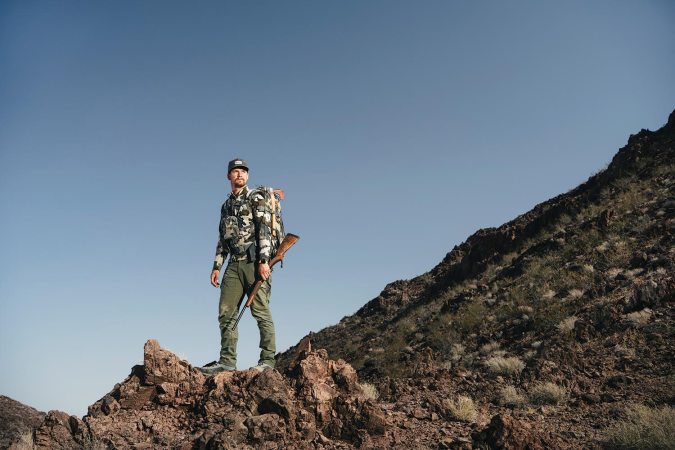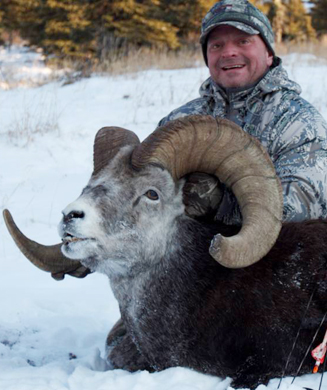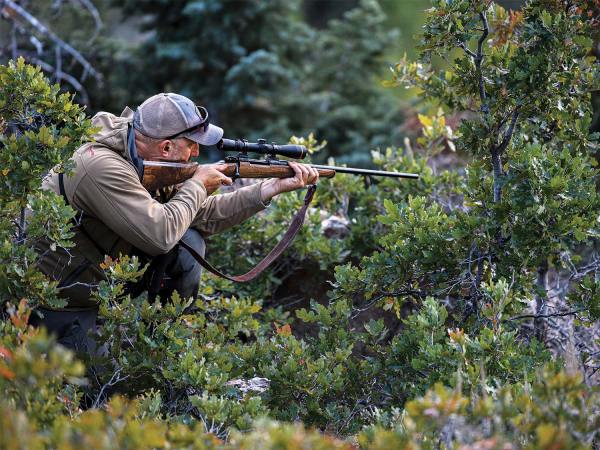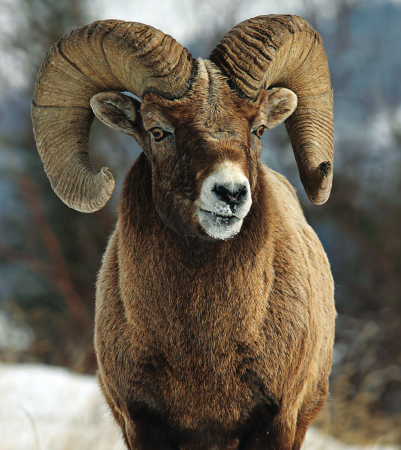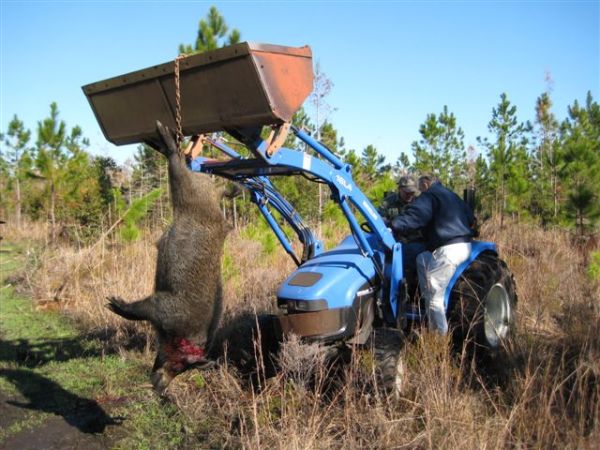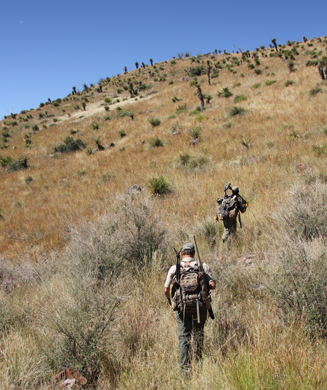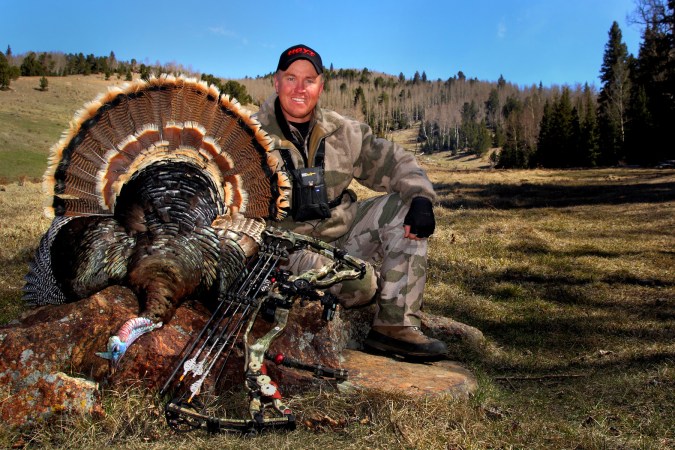The 30-mile hikesand 105-degree desert heat weren’t even the hardest parts
When my editor suggested I write a column about my toughest hunt ever, I immediately took it for a tall order. After all, I’ve been in the fields and forests for almost half a century and have experienced a lot of difficult hunting conditions. But when I added high levels of frustration and stress to the equation, one hunt jumped out–a brutal 1977 desert sheep hunt in Utah.
Drawing the tag was like hitting the Lotto. Mine was one of 17 tags issued to more than 500 applicants. I’d hunt on my own. In fact, only one of our number would be guided by an outfitter. The outfitter was an old desert rat in the region who was said to know the location of more “secret” water holes than the sheep.
Prior to the hunt, all tagholders had to take an orientation class. With spotting scopes, we judged sheep horns that were set on saw horses 100 yards away in a city park. A legal ram had to score a minimum of 144 B&C points or be at least 7 years old.
I asked an old writer buddy to join me for a few days. Ken Heuser of Rifle, Colo., now deceased, spent five days with me. The season was 30 days long and I’d planned on hunting every day I could.
HELL WEEK
For five days we hiked and climbed up and over sandstone escarpments and rimrock ridges. We squeezed through narrow canyon walls just 30 inches wide and carefully worked our way through crevasses in search of sheep. When we needed a break, we sat on cliff ledges that lifted 1,000 feet from the desert floor and glassed and glassed.
The temperature ranged from 102 to 107 degrees. I cannot even begin to describe the blowtorch heat. Each day I would save a fresh peach in my pack to motivate me onward. I savored every bite of that fruit as I slowly ate, being careful not to waste any of the juice.
The outfitter invited me to park my camper next to his so we could compare notes each night around a campfire. For the first five days of the hunt, he saw the same thing Ken and I did–exactly nothing. The same went for all the other hunters we talked to. We decided a serious drought had the sheep hidden up in remote canyons where there were seeps and springs.
I planned to return home for a day or two and then go back to the desert with another pal. My timing couldn’t have been worse. A Colorado outfitter had killed a grizzly bear with a hand-held arrow after the bear almost chewed him to pieces. My editor sent me to cover the story. The outfitter was badly mauled, and I could speak to him only a few minutes each day. I spent two weeks of my precious sheephunting time in Alamosa, Colo., completing the article.
BACK TO HELL
I wasted no time getting back to the sheep hunt. I met up with my buddy, Doug McKnight, who owned a sporting goods store in St. George, Utah. Doug knew the sheep area somewhat, and I had just eight more days to find and kill my ram. I checked with the outfitter, and they still had not seen a single sheep. I moved my camper to another area, intending to check with the outfitter every couple of days to see how they were doing.
Doug and I relentlessly pursued sheep in the most treacherous country I’d ever seen in my life. In many areas, a slip would mean death. We left camp at 4 a.m. every morning and returned close to midnight, hiking 30 miles in the tortuous heat each day.
We kept up this grueling pace for five solid days; then Doug suggested we try an extremely remote part of the desert. To get there, we had to “walk” his pickup off a rocky side hill where there was no road. I guided each tire as he thumped down the mountain, often placing rocks under the wheels when necessary. The distance of that rocky slope was only a quarter of a mile, but it took two hours to reach the desert floor. We headed for a nearly invisible road made by uranium miners almost 30 years before. The plan was to drive to the end of the road and hunt the desert wilderness, literally living among the rocks like animals.
ROAD TO NOWHERE
We got on the old two-track road and presently got the truck mired in a fine blowsand wash. The pickup was buried to the axles. We worked five hours in the 105-degree heat and managed to get the truck out. We celebrated the victory by walking over to a lone bush to eat an orange. I looked at the truck absent-mindedly and saw black smoke coming from beneath it. Doug and I rushed over; flames were licking along the drive shaft. Something had caught fire when we tried to extricate the truck from the wash.
We got down low and tried scooping sand and throwing water on the flames, but it just fanned the fire. We unloaded the truck as quickly as we could as the flames grew, promising to engulf the truck. We pulled out as much as we could–water, food, sleeping bags, my rifle and any gear we could grab–but we had to work fast. After we moved away, the fire consumed the truck with 40-foot flames, reducing it to a mass of molten metal and glass.
We were distraught, and as far as I was concerned, the hunt was over. We headed for camp in the cool of the night, walking 22 miles before sunup. We returned with my truck to pick up the rest of the gear that we saved–but we had to put my truck through the same ordeal down the rocky slope. I was profoundly glad to say goodbye to that place.
GRAND FINALE
Doug and I retrieved his gear from my camper, and then left the rig behind to save time getting him home. He was anxious to take care of the insurance paperwork on his destroyed truck. I’d return for the camper on my way home.
When I later got to my camper, I saw a note on the door from the outfitter. It read: “Jim, we found two legal rams and my client killed one of them. The other is bedded and in no hurry to leave. Drive as fast as you can to the end of Mullen Ridge and I’ll meet you there. I know you can kill that sheep.”
Too bad for me that the season had closed the day before.
For information about Jim Zumbo’s books, go to jimzumbo.com.
Check out Jim Zumbo’s blog at outdoorlife.blogs.com/zumbo
HUNT OF THE MONTH
Bighorn Sheep
TOP SPOT: Montana’s Unit 501.
SKINNY: Unit 501 has unlimited sheep permits.
SEASON/FEE: Sept. 15- Nov. 26; resident, $80; nonresident, $755
CONTACT: Montana FWP (fwp.mt.gov)
Mybuddy’s pickup truck “overheated,” with disastrous results. We had tohike 22 miles back to camp that night.

